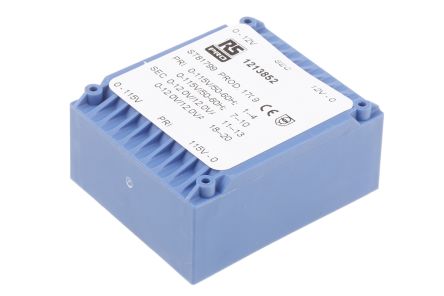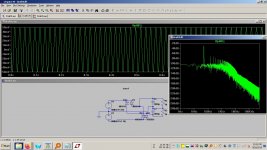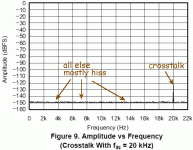I'm not sure why induced 50Hz hum at -120dB or lower is an issue for any DIYer...
I'd think that without a faraday cage around the equipment and user, purely induced hum could easily be higher than this.
In short, isn't this a bit of a "non problem"?
More often than not, touching a surface connected to, or coupled to (Inductively or capacitively) a gainy signal input will cause increased noise., esp from high Z source. Like a finger.
I'd think that without a faraday cage around the equipment and user, purely induced hum could easily be higher than this.
In short, isn't this a bit of a "non problem"?
More often than not, touching a surface connected to, or coupled to (Inductively or capacitively) a gainy signal input will cause increased noise., esp from high Z source. Like a finger.
Last edited:
I bought a transformer from a local supplier and it is a reputable brand.
My caps were also purchased locally, and are known good quality parts.
My preamp is remote controlled, I use an Arduino and an Alps blue motorised pot. It's interesting to note that I see the same spikes in the Spectrum analysis, as Amir did on the Audio Review site.
Thanks again, yes same spikes but some 30dB lower in level ?
... anyway this is above my understanding ... because i understand the residual 60Hz noise but i do not understand the harmonics ...
I mean ok with a 50-60Hz spike ... but the harmonics below the signal frequency ? too much complicated ...
Last edited:
I'm not sure why induced 50Hz hum at -120dB or lower is an issue for any DIYer...
<snip>
In short, isn't this a bit of a "non problem"?
<snip>
You are right, it is a non problem - I was just trying to get an understanding of why it was happening, and now I have that.
Thanks again, yes same spikes but some 30dB lower in level ?As i said i would be perfectly ok to live with that
... anyway this is above my understanding ... because i understand the residual 60Hz noise but i do not understand the harmonics ...
I mean ok with a 50-60Hz spike ... but the harmonics below the signal frequency ? too much complicated ...
The harmonics below the signal frequency are harmonics of the 50Hz PSU interference, they are not harmonics of the 1kHz fundamental tone.
They are there even with no signal.
I haven't bothered to investigate this in any depth, however the PSU is well smoothed but without further investigation I don't see why it's happening.
I do think it's ominous that no PSRR is quoted in the datasheet though!
Of course it is possible that the PGA chips are fakes?
The harmonics below the signal frequency are harmonics of the 50Hz PSU interference, they are not harmonics of the 1kHz fundamental tone. They are there even with no signal
understood ! thanks

I haven't bothered to investigate this in any depth, however the PSU is well smoothed but without further investigation I don't see why it's happening. I do think it's ominous that no PSRR is quoted in the datasheet though!
yes ! it could be not that good
taken from the Stereophile review
The volume control is implemented with two two-channel Burr-Brown PGA2310 programmable-gain chips, one per channel used as a differential volume control
Read more at Classe CP-800 D/A preamplifier | Stereophile.com
who knows ? could be ...Of course it is possible that the PGA chips are fakes?
"The volume control is implemented with two two-channel Burr-Brown PGA2310 programmable-gain chips, one per channel used as a differential volume control"
Being configured in differential mode will make a huge difference I think.
That's probably why it's ok.
i was thinking the same
Still if the power supply is ultra low noise maybe just a single chip ... the pga2310 datasheet is astonishing. No trace of noise ...
You are right, it is a non problem - I was just trying to get an understanding of why it was happening, and now I have that.
Oh...my misunderstanding there then.
Interestingly I have some OLD PGA chips from dead instrumentation, and now I have a potential use for them!
Last edited:
Those are completely different. Wiring gives capacitive / electric coupling, most easily picked up by high-impedance circuitry that's unshielded. Since the wires run throughout the building this interference is everywhere indoors, worse near the wires.Any room which has power in it, has hum in it. Both from wall-wires and from transformers.
Transformer hum is magnetic field, which induces voltages into any nearby circuitry, shielded or not, at any impedance level, dependent on circuit loop area and orientation, principally. Magnetic mu-shielding can reduce this type of interference. Adding a ground-loop will hugely increase the loop-area and thus hum pickup from such a magnetic source.
Magnetic field interference drops as the inverse cube of the distance.
Both of these types of interference are near-field effects, unlike RFI.
> Those are completely different.
Not sure your point.
The outside layer of a transformer is a significant capacitive source. Perhaps similar to 10 feet of power wire.
Both (all) fields tend to have both near-field and far-field effects. When the main source of RFI was distant broadcasters, we were usually in the far-field. But today we have little transmitters all over. As for 50/60Hz crap.... yes it falls-off fast from pair-wire, but a typical room has power wire on all walls so you can't really get away from it.
> pga2310 datasheet is astonishing. No trace of noise ...
The crosstalk plot implies random hiss at -148dB. This is probably near-ideal for the reference level and the impedances.
Not sure your point.
The outside layer of a transformer is a significant capacitive source. Perhaps similar to 10 feet of power wire.
Both (all) fields tend to have both near-field and far-field effects. When the main source of RFI was distant broadcasters, we were usually in the far-field. But today we have little transmitters all over. As for 50/60Hz crap.... yes it falls-off fast from pair-wire, but a typical room has power wire on all walls so you can't really get away from it.
> pga2310 datasheet is astonishing. No trace of noise ...
The crosstalk plot implies random hiss at -148dB. This is probably near-ideal for the reference level and the impedances.
<snip>
The outside layer of a transformer is a significant capacitive source. Perhaps similar to 10 feet of power wire.
<snip>
For both EI and toroidals? Because I thought toroidals had a certain amount of field cancellation, but I'm open to correction on that.
> ...
> pga2310 datasheet is astonishing. No trace of noise ...
The crosstalk plot implies random hiss at -148dB. This is probably near-ideal for the reference level and the impedances.
Hi ! thanks a lot for the very valuable confirmation.
For the PGA2311 i read from the datasheet
"PSRR Power-supply rejection ratio(250 Hz)= 100 dB"
not bad at all ...
but i cannot find anything for the 2310 ...
Anyway ... i start to think to change the power supply caps and regulators with well known and regarded parts,
just to be sure that parts grade is not an issue
The green BingZi transformer is usually seen in very cheap units while the more expensive units use Talema parts.
Speaking instead of higher freq noise i would try pcb mount transformers with separate windings, as recommended by the famous John Curl as well

they are usually better at rejecting high Hz noise coming from mains
Last edited:
<snip>
Anyway ... i start to think to change the power supply caps and regulators with well known and regarded parts,
just to be sure that parts grade is not an issue
<snip>
I think you are wasting your time trying to improve that unit.
Given how close the transformer is to the audio circuitry, you are always going to have problems with radiated fields.
Also, that RS transformer is not a toroidal, so you will probably make things worse fitting that.
Noratel make good transformers, you'd be better off with one of those - however like I say, you are still going to have issues.
The one above is 2x9v though - but they do a 2x12v as well.
Last edited:
I think you are wasting your time trying to improve that unit. Given how close the transformer is to the audio circuitry, you are always going to have problems with radiated fields.
Hi ! thanks a lot for the very kind and precious advice ... then what about taking it out of the case and use an umbilical ? it can be done very easily actually i did it for another project years ago.
Also, that RS transformer is not a toroidal, so you will probably make things worse fitting that.
yes ... but toroidals have poorer high Hz mains noise rejection compared to transformers with separated primary and secondary windings.
I read that R-core could be the best ... i could try one of those
Noratel make good transformers, you'd be better off with one of those - however like I say, you are still going to have issues.
The one above is 2x9v though - but they do a 2x12v as well.
thanks again for the advice. Very nice parts indeed.
I think that at the very least i will take the transformer out and maybe swapping parts inside with higher grade ones.
And maybe live with that. I am not expert enough to mess with the design ...
Last edited:
For the PGA2311 i read from the datasheet
"PSRR Power-supply rejection ratio(250 Hz)= 100 dB"
i cannot find anything for the 2310 ... ...
No, not PSRR- that's a different thing.
They don't say the hiss level. But they give a Crosstalk test. This shows that signal at one channel leaks into the other channel, at -122dB (at 20KHz!).
But it ALSO shows some "stuff" which is not the 20KHz test tone. Essentially the same at all frequencies. This IS the hiss level. I squint it as -148dBFS.
http://www.ti.com/lit/ds/symlink/pga2310.pdf
Attachments
Super congrats on dispatching the original issue. Well done!
If you have another situation where the FFT resembles the 1st pic in your post #18, though, you might have some luck with Quasi Modo and/or CheapoModo. Both are well documented in other threads here and either makes a nifty little project. Mark Johnson designed them, has added a lot of support, and seems patient and entertaining to boot.
Continued success,
Rick
If you have another situation where the FFT resembles the 1st pic in your post #18, though, you might have some luck with Quasi Modo and/or CheapoModo. Both are well documented in other threads here and either makes a nifty little project. Mark Johnson designed them, has added a lot of support, and seems patient and entertaining to boot.
Continued success,
Rick
- Status
- This old topic is closed. If you want to reopen this topic, contact a moderator using the "Report Post" button.
- Home
- Amplifiers
- Power Supplies
- Low level 50Hz hump in FFT transformer related.

